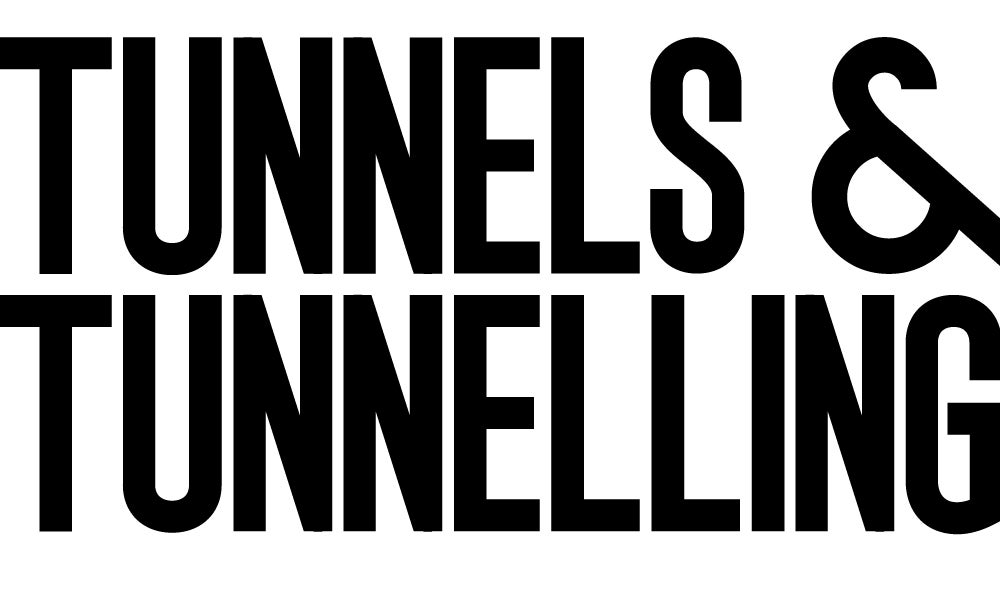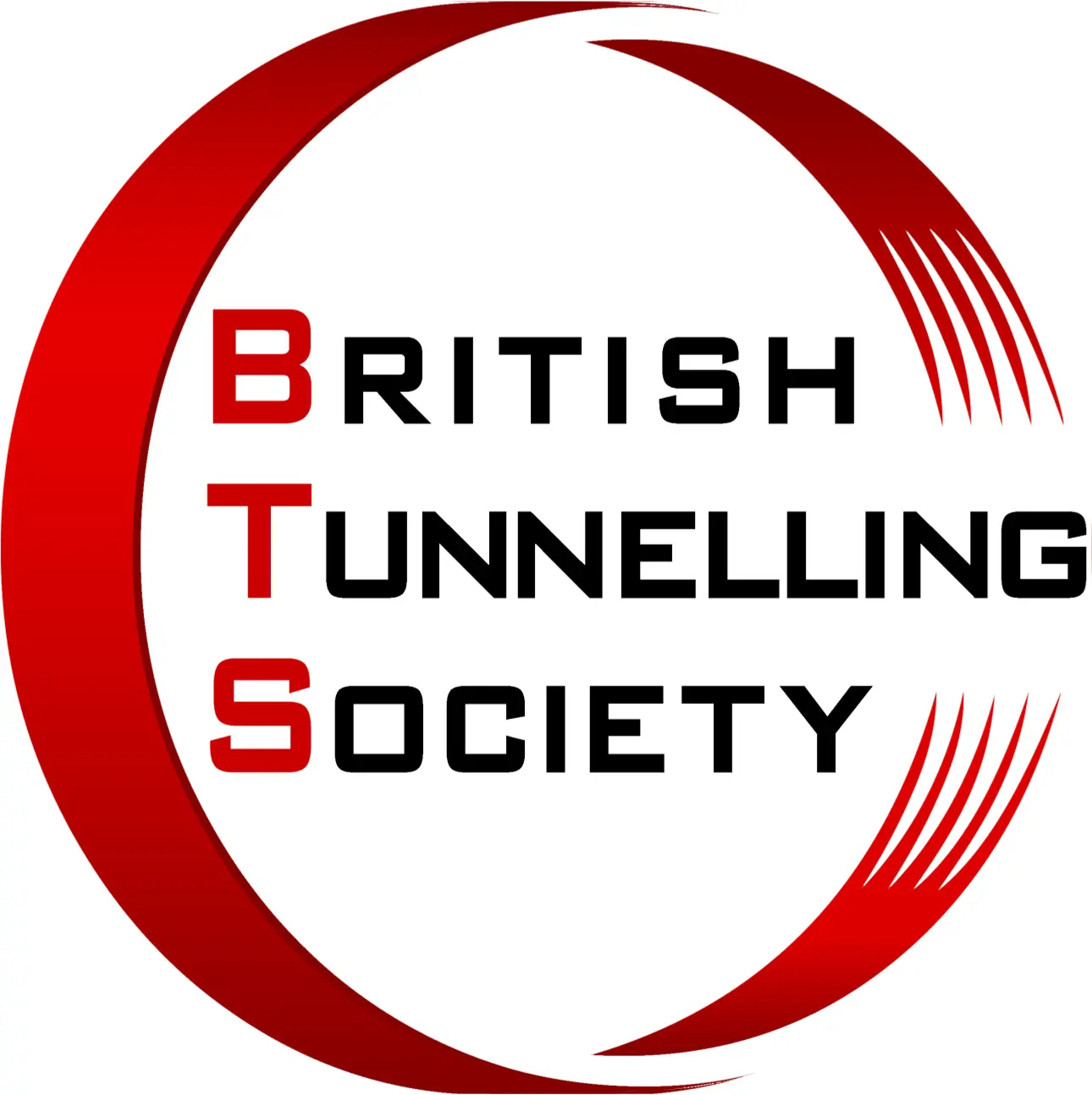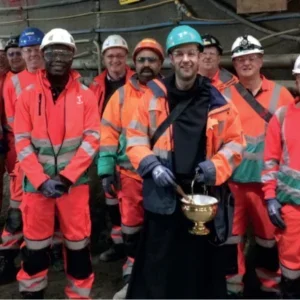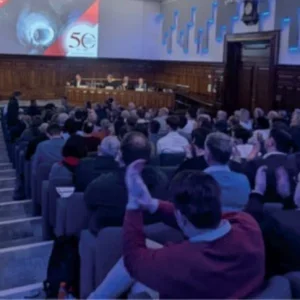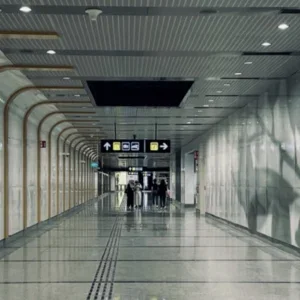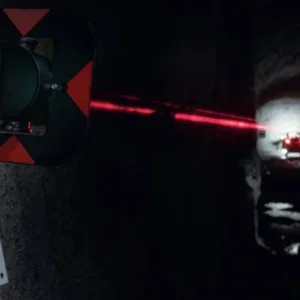Swiss contractor marti tunnelbau’s 4.4m diameter Robbins main beam TBM, affectionately nicknamed “The Old Lady”, has been a big competitive advantage. The TBM was originally built in 2002 for the Upper Diamond Fork project in Salt Lake City, Utah, USA, before being used on the McCormick Place tunnel in Chicago, Illinois, USA. The machine was purchased by Marti for the Bracons tunnel in Spain, excavated from 2006 to 2008, and they have retained it ever since. “For us the value of owning this machine is in modifying it ourselves, having a good knowledge of the whole system and a staff experienced in working on the machine. It helps us to be faster during assembly and startup of the machine on site,” says Thomas Guggi, technical director for Marti.
Guggi estimates that the savings on various projects – depending on the amount of specialisation – can be substantial as compared to buying a new machine every time. “If we count an amortisation time for the TBM of up to 20km tunnelling or five projects we can save (including all refurbishment costs) at least 30 per cent compared to purchasing a new machine – if we can keep the back-up with minimal changes.” He adds that this savings is for smaller diameter machines of perhaps 5m or less that are not undergoing a diameter change. Even with that, there are some cost savings with rebuilds of larger machines and diameter changes (perhaps 5 per cent). And there are time savings all around, no matter the diameter. “The savings on mobilisation time is very important. Refurbishment can be done in a few months (as few as three), saving us five months as compared to a new machine.”
Marti’s machine has been used on two recent projects since the Bracons tunnel – the Milchbuck Safety Gallery in Switzerland in 2012, for which the TBM underwent a major diameter change from 4.4 to 4.15m and required a new back-up system—and most recently Sisto Sachseln, another Swiss tunnel that required a diameter adjustment to 4.2m and some upgrading of electrical, ventilation, and dust extraction systems. Altogether, the machine has been used on five tunnels thus far totalling 12.3km (9.7 of which were bored by Marti). While the machine does not have a current project, Guggi sees few limitations: “It will surely be able to dig more jobs, at least 10km or more. Limiting factors could be demands by law or new normative demands for TBM capabilities. There may be some limits on certain components, such as electrical or hydraulic systems, but we expect the steel structure will last for many years”
QUANTIFYING TIME AND COST SAVINGS
Time and cost savings for a rebuilt machine can be highly variable, depending on the extent of the rebuild and the number of projects on which the machine is used. But there is general agreement that under the right conditions, the savings can be significant. “If we built a 3m diameter main beam machine, and we do a rebuild at the same diameter with many of the same components, that will save a lot more than rebuilding that same 3m machine as a 4m machine with a brand new back-up system,” says Doug Harding, Robbins VP-sales.
Canada’s McNally Construction is a good example of just how much savings a rebuilt TBM (or three) can provide. The company owns four Robbins machines, including one of the oldest TBMs still in operation–a 2.7m diameter main beam TBM originally built in 1968. The machine was first used for a hydroelectric tunnel in Tasmania, and was purchased by McNally in 1972 for use on multiple sewer tunnels in Toronto and Ottawa.
“Of the three that we originally purchased (a 3.6m, a 2.9m, and a 2.7m diameter machine) they have completed over 50km of tunnels on over 12 projects. We custom-modified the cut size each time by adjusting cutters and buckets to suit the requirements of the owner,” says Steve Skelhorn, project sponsor for McNally Construction. Over the years, the company also added guidance systems, updated the hydraulics, added probe drilling capabilities and added foaming agent dust suppression systems, and more recently updated one of the TBMs to Class 1 Division 2.
“With refurbishment at the start of each project, these TBMs will continue indefinitely. Major components, such as bearings, cutterheads, grippers and hydraulics may all eventually need replacing but not necessarily at the same time,” adds Skelhorn. As for the savings of using rebuilt machines vs. new ones for each project, he speaks from experience: “Savings during a rebuild is highly variable and can range from 75 per cent cheaper for a simple machine and a tunnel project with tried and tested ground conditions, to around 20 per cent cheaper for a project with more complex requirements (a high-pressure EPB for example).”
For McNally Construction, the advantages of rebuilt machines aren’t just in the costs. Skelhorn states that the time savings of using a rebuilt machine can be six months or more (as long as the TBM truly fits the project specifications and is not a compromise, and major changes aren’t required). The other benefit is in owning the machine itself: “Familiarity of the TBM is a big plus: operators and maintenance crews are familiar with the equipment, which can greatly improve performance during the initial learning curve.”
On the importance of
Maintenance
It should be emphasised that other factors affect the frequency and cost of rebuilds, such as maintenance. “Maintenance is an important factor to ensure the multiple use of a TBM,” says Guggi. “Staff should know the machine very well and treat it well. Systematic maintenance and control will avoid serious and costly repairs and helps keeping refurbishment costs low.” For McNally, maintenance has a direct effect on rebuild costs later on.
“Maintenance is essential for performance on a particular project. It does not really reduce the machine’s ability to do multiple projects, but a lack of maintenance can definitely affect the costs of refurbishment.”
Storage between projects is a key part of that maintenance. Guggi explains, “We conserve the structure using a kind of anticorrosive oil spray. The assembled TBM itself and all critical components we store in a warehouse – the cutterhead we let turn every month and the main bearing is filled with oil.”
At McNally, storage is equally critical: “Typically, TBM systems are drained (specifically water systems, which are critical in cold climate). Cable ends are all waterproofed and all hydraulic systems are capped. Critical electronic components are removed and stored inside. The TBM and support gear are then shrink-wrapped – similar to boat wrapping protection,” says Skelhorn.
THE ART OF THE REBUILD
The rebuilding of TBMs – both the process and the standardisation of rebuilds – has become a focus for the industry as more projects with multiple machine requirements and short time frames are being proposed. The focus has been further highlighted by Itatech, a technology-focused committee for the International Tunneling Association that has recently produced guidelines on rebuilds of machinery for mechanised tunnel excavation in 2015.
In general, Robbins’ experience with rebuilding machines has yielded some key insights. As long as the TBM is wellmaintained, there will be jobs it can bore economically. Optimal TBM refurbishment on a used machine requires a broad knowledge of the project conditions, and there are some limitations:
¦ Machine diameter can be decreased within the limits set by free movement of the grippers and side/roof supports
¦ Machine diameter can be increased subject to the structural integrity of the machine and the power/thrust capabilities
¦ Propel force can be increased only to the level supported by the grippers’ thrust reaction force
¦ Cutterhead power must be adequate to sustain the propel force in the given rock, but cannot be increased beyond the capacity of the final drive ring gear and pinions
¦ Cutterhead speed increases must not exceed the centrifugal limits of muck handling or the maximum rotational speed of the gauge cutters
Increasing the power of the TBM is one way to make the design more robust for a longer equipment life. Strong designs have been developed in recent years, including Robbins High Performance (HP) TBMs, and used in a number of hard rock tunnels. These TBMs are designed with a greater strength of core structure and final drive components. They can be used over a much wider range of diameters, whereas older machines (from the 1970s and 80s) are typically limited to a range of less than 1m of diameter change plus or minus their original size. They have the capability of operating over a broad range. For example, a 4.9m TBM can be refurbished between 4.3m and 7.2m diameters—a range of 2.9m. Main bearing designs have allowed for greater flexibility, evolving from a two-row tapered roller bearing to the three-axis, three-row cylindrical roller bearing used today. This configuration gives a much higher axial thrust capacity for the same bearing diameter and far greater life in terms of operating hours or revolutions. Overall, what determines how long a TBM will last is a function of the fundamental design, such as the thrust and gripper load path through the machine and the robustness of the core structure. On older model TBMs, the ring gear and pinions can be strengthened, and larger motors can be added. With sufficient core structure strength, it is also possible to increase the thrust capacity. The limitation is the capacity of the gripper cylinder to handle the increased power and thrust. Once replacement of the gripper cylinder and carrier are required, TBM modification costs are generally considered uneconomic.
TO ACCESSORISE OR NOT TO
ACCESSORISE
As Skelhorn says, “This is one of the great debates, with the KISS mindset (‘keep it simple stupid’) against the ‘We must have all the bells and whistles’ mindset. Obviously fewer features means there is less to go wrong, but on the other hand, more features provide protections and feedbacks allowing improvements to be made.”
Modern systems on TBMs, it can be argued, allow for better monitoring of the machine and therefore better maintenance and operation. Such systems could therefore extend equipment life in the long run. The capabilities of a modern machine, says Harding, are vast: “All the modern machines within the last 15 years have had VFDs so that is not necessarily a new component. Major electrical systems like VFDs have been modernised to be very reliable. PLCs, controls, and monitoring have been advancing in recent years. We can monitor oil, vibration, loading, and many other machine parameters to have a better idea of the current state the machine is in.”
Skelhorn agrees on the advantages of monitoring: “Generally speaking the modern electronic systems are driven by client-provided specifications and do provide the advantage of being able to monitor in real-time TBM performance as well as provide good tools for post tunnelling analysis. In my view I would rather have a machine with all the features, however these must be robust and easily understandable by the maintenance crews. In other words, the systems should be reliable and enhance the mining, not hinder it with bugs and faults. It is also important to establish early on what systems are really required for improving the performance, versus those systems which are considered nice to have.”
Harding is also aware of needed vs. ‘nice to have’ features and adds: “There are many ways to define ‘bells and whistles’. If a feature is needed, whether it’s increased thrust, a tapered shield, water control, or other custom design then it is not an extra. In our opinion a probe and grout drill are a cheap form of ‘risk insurance’ to detect problems ahead of the machine. On the other side of things, fully interchangeable components can be costly if you don’t need them (as in a screw conveyor to belt conveyor conversion), so these types of features should be based on a detailed GBR.”
On the other side of things, Skelhorn says that with more features “refurbishment is more involved and requires the use of specialists to supplement the TBM mechanics and electricians used on the simpler machines.” For Guggi, a simple machine is ideal but perhaps not always practical: “To have a simple machine would be great – but the demands of contractors/safety and health/ law almost exclude such machines in most cases. New technical demands are forcing us to have PLC systems on most projects. But, either way I think we have good experience in these matters and we can build reliable systems.”
IN CONCLUSION: REBUILT OR NEW?
Like so many things in the tunnelling industry, the question of “rebuilt or new” is not a simple one. “Many owners now specify a new TBM for projects. This is on the assumption that new TBMs will be more reliable. In my experience this is not always the case. Refurbished machines are tried and tested and have all the bugs worked out. However this must be weighed against the overall requirements for the TBM being able to cope with the ground,” says Skelhorn. He gives an example of just how complex it can be: “There was a project in Europe in the mid-1990s where two EPB tunnels were being excavated through complex ground with existing TBMs. Water pressures were over and above those the machines had seen before and these early EPB machines had no discs, no foam systems and a centre-mounted screw conveyor. EPB control was difficult to say the least and progress was slow – around 4m per shift. To accelerate the schedule, a new custom-built TBM was purchased, specifically designed to deal with the conditions. This TBM achieved a massive increase in production with a best shift production of 30m.”
At Robbins, new machines are often required for unique conditions. “In the case of a project, a new machine might be the correct solution if you need a specialised concept, have a unique geological condition or a convertible concept like the crossover TBM,” said Harding. “A very long tunnel in very hard rock is another example where a new machine might be better. Robbins supplies new TBMs for about 50 per cent of its projects.
“For the other projects, of about 6,000m long or less, in relatively known geology, a rebuild is appropriate. The advantage is in cost savings and delivery time. It is also helpful when there is data from a previous project in a given geology that supports the design of the rebuilt machine so its performance is known. For example projects in Cleveland Shale, Texas Chalk, Chicago limestone, and others. Metro projects where tunnels are fairly short, and geology is known, can be another condition where a metro-sized EPB can be used over and over again because of short tunnel lengths.”
A point in favour of new TBMs is one that Skelhorn indicates as not often considered: “Most contracts we are working on are design-bid-build, and we have to take into account life cycle costs. An existing TBM will dictate tunnel diameter and may reduce construction cost initially; however, purchasing a new TBM allows the size – and in the case of segmentally lined tunnels, the final lining design–to be customised.
“This can lead to an increased hydraulic performance, which over the life cycle of the tunnel can greatly outweigh any additional costs.”
The true answer of “new or rebuilt” is thus dependent on a number of project conditions and requirements. Harding says that Robbins works to reduce the time gap between new and rebuilt machines, and between standard and customised machines, but of course simpler machines and rebuilt machines will be built more quickly.
“We can build a brand new, fully customised crossover type machine in 11 to 12 months. We can also build a standard metro-sized EPB in nine to 10 months. One is standard, one is custom—it is all dependent on the customer needs.”
